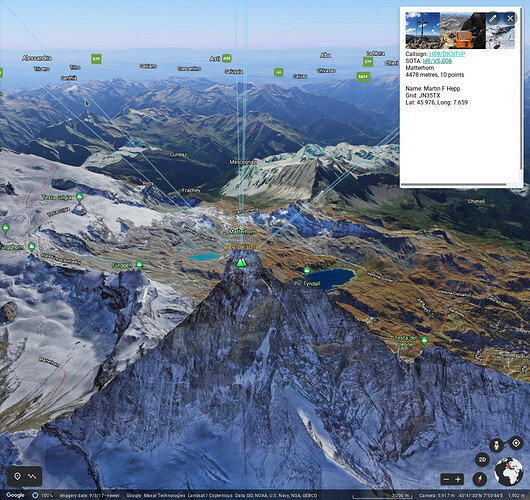What this means of course is that you can now use Google Earth to be a virtual activator as the entire SOTA database is available for visualization.
Take for example the recent 09/09/2021 activation of Matterhorn HB/VS-006 by Martin @DK3IT. The downloaded CSV converted to Google Earth KML provides a wonderful SOTA fuelled world to explore.
The Google Earth KML file that was used to generate this image can be downloaded from here: 1632869690919-DK3IT_566759_activator_20210928.kml.
Regards Mark.
